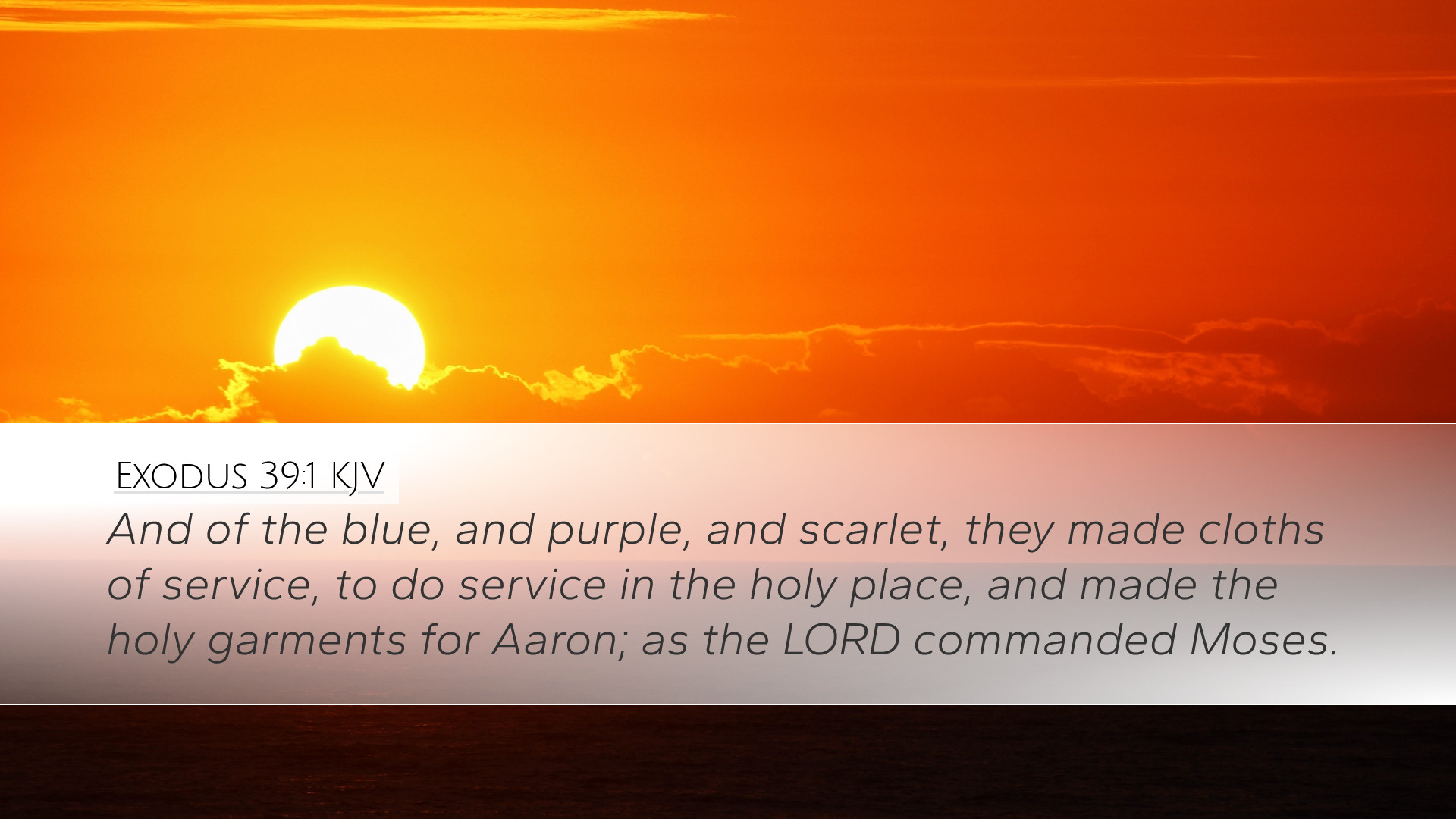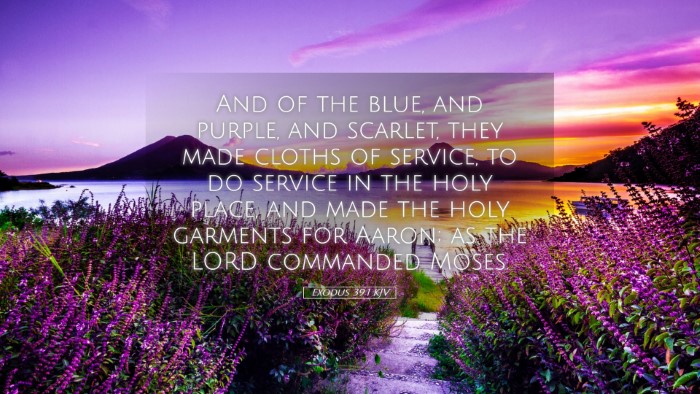Commentary on Exodus 39:1
Exodus 39:1 states:
"Of the blue, and purple, and scarlet, they made cloths of service, to do service in the holy place, and made the holy garments for Aaron; as the Lord commanded Moses."
Introduction
This verse concludes the detailed account of the tabernacle's construction and the garments made for the priests, particularly Aaron, who serves as the high priest. The meticulous instructions reveal the significance of holiness and divine mandate in worship.
Significance of the Garments
Matthew Henry notes that the garments of the priest signify the need for reverent preparation in our service to God. Each piece of clothing serves a symbolic purpose:
- Blue: Represents heaven; a reminder of God's sovereignty.
- Purple: Denotes royalty; indicates the kingly nature of Christ.
- Scarlet: Symbolizes sacrifice; pointing to the blood of Christ.
Henry emphasizes that these colors were not merely for aesthetic appeal but carried deep spiritual meaning, reflecting the nature of God and the serious undertaking of priestly duties.
The Process of Craftsmanship
Albert Barnes outlines the careful attention to detail in the making of these holy garments. The expression "as the Lord commanded Moses" encapsulates the necessity of adherence to divine instruction. This highlights a theme in the Pentateuch where obedience to God's commandments is paramount.
We see craftsmanship as not only a skill but an act of worship. The work of the artisans was a form of service unto the Lord, establishing a precedent for all forms of labor dedicated to God.
Roles and Responsibilities
Adam Clarke elaborates on the implications of Aaron’s garments. As the high priest, Aaron's attire was essential for his role in mediating between God and the people. Clarke states:
"The priest’s garments were significant in conveying authority and the holiness required in approaching God."
Each garment served to prepare Aaron as a mediator, symbolizing both his connection to God and his representation of the people. It teaches modern readers about the seriousness of representing God and the responsibilities borne by leaders in spiritual settings.
Service in the Holy Place
The phrase "to do service in the holy place" is crucial. Matthew Henry elucidates that service in the holy place requires a sanctified approach. Worship must involve not only external forms but also an internal heart posture of reverence.
By requiring specific garments, God enforced the principle that worshippers must be prepared and positioned to enter into His presence. This serves as a reminder for contemporary worshippers to approach God with due preparation and humility.
Lessons for Contemporary Believers
This verse can be applied in several ways for present-day faith communities:
- Holiness: The underlying message of the necessity for holiness in both worship and service remains relevant today.
- Obedience: The emphasis on doing things "as the Lord commanded" serves to underscore the importance of adhering to God's Word.
- Preparation: Just as the priests prepared themselves with special garments, believers today are called to prepare their hearts and minds for worship.
Engaging with God from a place of careful preparation aligns our hearts and minds with His holiness, ultimately enhancing the worship experience.
Conclusion
In summary, Exodus 39:1 articulates the essential nature of divine service and the seriousness of the call to holiness in worship. Understanding these instructions about the priestly garments reveals the character of God and the weight of righteousness in approaching Him.
Pastors, students, theologians, and scholars are invited to reflect deeply on these themes as they relate to their personal and communal worship experiences.


